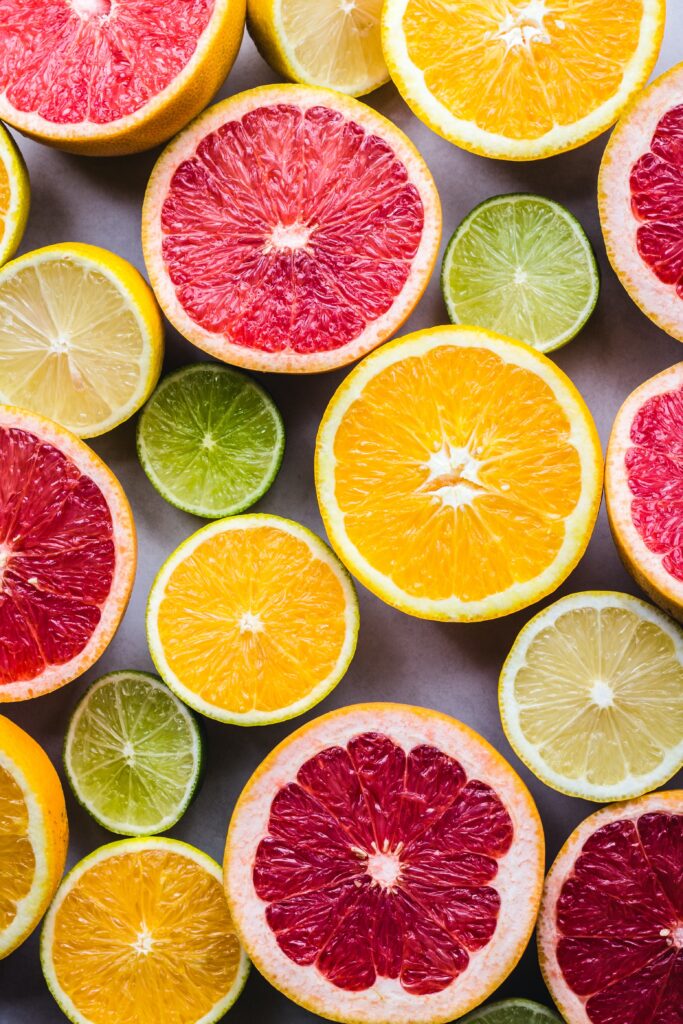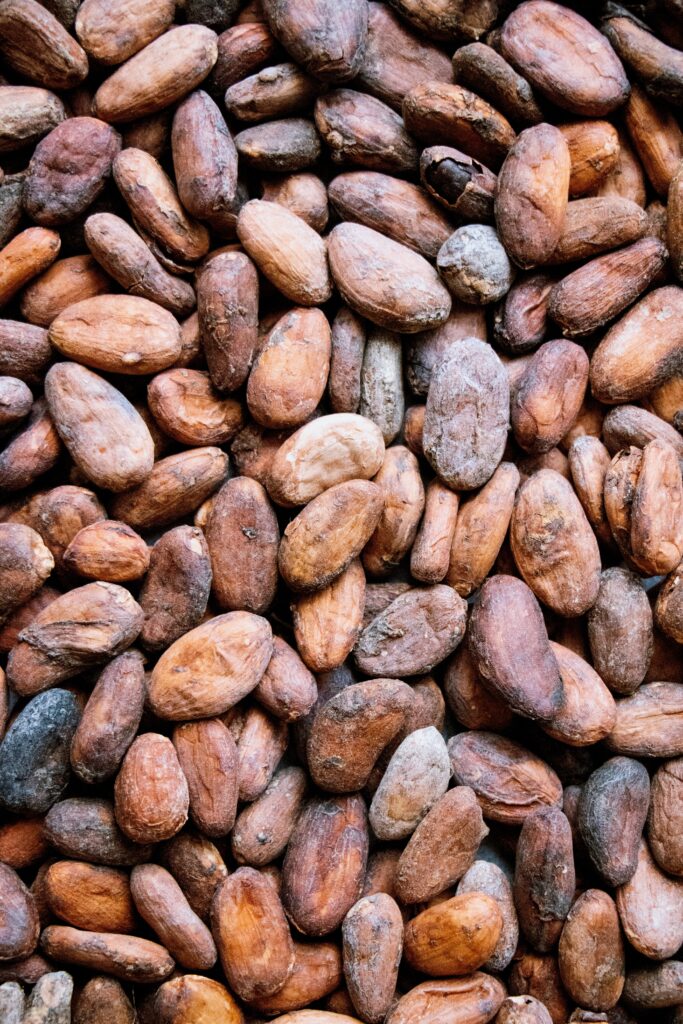Voluntastrole
Dr.med. Heinz Lüscher
Voluntastrols are secondary plant substances such as those found in citrus fruits, camomile or cocoa. They have strong antioxidant, anti-inflammatory and neuroprotective effects. They can therefore be successfully used in brain diseases such as Alzheimer’s or Parkinson’s, after a stroke or other brain injury, but also in depressive disorders.
The brain
The human brain is the control centre of our body and of astonishing complexity! It is a wonderful network of billions of nerve cells (neurons). As a superordinate control instance, it not only coordinates and controls all the information provided to us by the environment day and night. It is also central to the smooth functioning of all organs and to sensible behaviour. Information from the body or the environment reaches the brain, for example in the form of hormones via the blood or as electrical impulses from the sensory cells via nerve tracts, where it is evaluated and processed. The brain sends out appropriate signals in response: For example, to muscles to make them perform a certain movement, or to glands to produce the correct amount of secretions, or to sensory organs to respond to stimuli from the environment and much more.

Voluntastrole in the video
Learn more about voluntastrole and the vital substances it contains in the video with Dr. Heinz Lüscher.
Impairments of the brain
If the brain is affected, the consequences can be very serious. Possible impairments are, for example:
- Post-commotional syndrome(Post-concussion syndrome), a variety of physical, mental and psychological
- emotional area after a brain injury (e.g. after an accident)
- Neurodegenerative disease(e.g. Alzheimer’s, Parkinson’s)
- Cerebral infarction(also stroke or apoplexy) with various
- Effects depending on the location of the infarct
- Depression- highly effective also for post-natal depression
Neuroinflammation
These different clinical pictures certainly have one thing in common: they change the life of a person and that of his or her environment greatly depending on the impairment. But there is another thing they have in common: they all lead to neuroinflammation. This is an inflammation of nerve tissue, in the narrower sense of the word a chronic inflammation of the central nervous system. Brain injuries of all kinds trigger a neuroinflammatory cascade that contributes to considerable neuronal damage and leads to temporary or permanent cognitive, physical and/or psychosocial impairment. Neurodegenerative diseases are also associated with inflammation of nervous tissue. According to the latest findings, neuroinflammation also plays a significant role in the development of depression. Researchers from the Centre for Addiction and Mental Health in Toronto and the University of Toronto presented a study in the journal JAMA Psychiatry that shows that patients with depression have inflammation in the brain, the intensity of which is related to the severity of the depression.[i].
Treatment with phytonutrients
Another common feature can be attributed to all these diseases: The treatment is always challenging, lengthy and the results often not really satisfactory! A promising supplement to support the brain could also come from nature. Current research in psychiatry and neurology is increasingly showing that a number of phytonutrients have an important role in the regeneration of the brain.
The serious effects of neuroinflammation can be reduced by using a mixture of selected secondary plant compounds that are directed against, among other things, the destructive inflammation mentioned above. The high antioxidant and anti-inflammatory effects play a major role in this. Indeed, oxidative processes are involved in the development of many diseases, including chronic inflammation and neurodegeneration. In addition, the ingredients also have a neuroprotective effect and thus protect the neurons.
Voluntastrole – specific secondary plant substances
The discoverers around Dr. Brian A. Schaefer propose the name Voluntastrole for a certain class of secondary plant metabolites (SPM). Voluntastrole are thus a combination of selected isolated secondary plant substances from different plants, which interact synergistically and have an influence on brain health. Each individual active ingredient was selected on the basis of its scientifically proven properties. Secondary plant substances play an important role in the adaptation of plants to their environment and protect them from pests, micro-organisms or predators. At the same time, they are also an important source for the production of natural medicines, as they have many positive effects in the human body. This is exactly what the discoverers of the Voluntastrole took advantage of. Epidemiological and experimental studies show that the modulation of the inflammatory response by natural phytomolecules such as those found in voluntastrole plays an important role in the prevention and treatment of many chronic inflammatory diseases, including depression and reduced brain function. The secondary plant compounds trigger a reaction that in turn triggers a cascade of neurotransmitters that lead to an improvement in the situation. In addition, the phytonutrients support blood circulation in the brain. Voluntastrole have been developed in accordance with the latest scientific research into the causes of mood swings and to maintain brain health.
Ingredients
Voluntastrole contain a unique, protected mixture of Secondary Plant Metabolites (SPM), which are described in more detail below:
- Several isolated SPM extracts of citrus bioflavonoids from Citrus reticulata (tangerine), Citrus aurantiifolia (true lime), Citrus sinensis (orange) and Citrus limon (lemon).
- solated SPM extracts from Matricaria chamomilla (true camomile)
- Isolated SPM extracts from Theobroma cacao (cocoa)
Citrus bioflavonoids
Citrus bioflavonoids is a collective term for various flavonoids found in citrus fruits. They are mainly found in their peels, they contribute to the colour as well as the smell and taste of citrus fruits. Individual citrus bioflavonoids may differ in their effects, but they have one thing in common; they are very powerful antioxidants and have anti-inflammatory effects. They also have neuroprotective properties (cell protection of nerve cells) and the potential to inhibit neurodegeneration. They are also said to have positive effects on the vascular system, leading to improvements in cerebrovascular blood flow (cerebral blood flow).

Real chamomile (Matricaria chamomilla)
Real chamomile is a well-known and very versatile medicinal plant. Unlike other types of camomile, true camomile has a hollow flower base and a characteristic smell. It belongs to the Asteraceae family, flowers from May to September and is now found in almost all of Europe and Western Asia. Among other things, chamomile is known for its anti-inflammatory effect. Camomile flowers also contain flavonoids, whose excellent effects we now already know.
Cocoa (Theobroma cacao)
The cocoa tree (Theobroma cacao), an evergreen undergrowth tree, only thrives in tropical regions under certain climatic conditions. Its leathery-woody fruits, which are around 20 cm long and up to 10 cm thick, contain 25 to 50 bean-shaped seeds: the cocoa beans. In our latitudes, the use of cocoa beans is mainly known for the preparation of chocolate. However, the indigenous peoples of Central America, especially the Aztecs, used them not only as food, but also as a medicine and natural stimulant. The healthy brown beans contain, among other things, rich secondary plant substances such as our now well-known flavonoids. But also amino acids, some of which serve as building blocks for neurotransmitters (neuronal messengers). Examples of these are: Endorphins, dopamine, serotonin and its precursor tryptophane as well as phenylethylamine. Endorphins can do much more than reduce pain.
They also have a calming effect, ensure better sleep, inhibit stress, and make for a cheerful mind. Dopamine controls drive, interest and drive. Serotonin helps to stabilise the psyche; it ensures serenity, harmony and contentment. Phenylethylamine is measurable in lovers and provides for the so-called butterflies in the stomach. Another ingredient of cocoa is theobromine, which has a similar effect to caffeine, although somewhat milder.
Among other things, it has a stimulating, vasodilatory and heart-stimulating effect, relaxes the smooth muscles and also brightens the mood. So this is really a “happiness cocktail” that is in these inconspicuous-looking cocoa beans!

Great effect – without side effects
As is often the case, the active ingredients of different plants in the right composition can work together in powerful synergy and even practically without side effects. Only when taking antihypertensive drugs or in cases of hypotension should it be noted that the plant substances known as voluntastrols can lower blood pressure in certain cases.
[1] 1. Setiawan E et al. (2015): Role of translocator protein density, a marker of neuroinflammation, in the brain during major depressive episodes. JAMA Psychiatry. 2015 Mar;72(3):268-75.